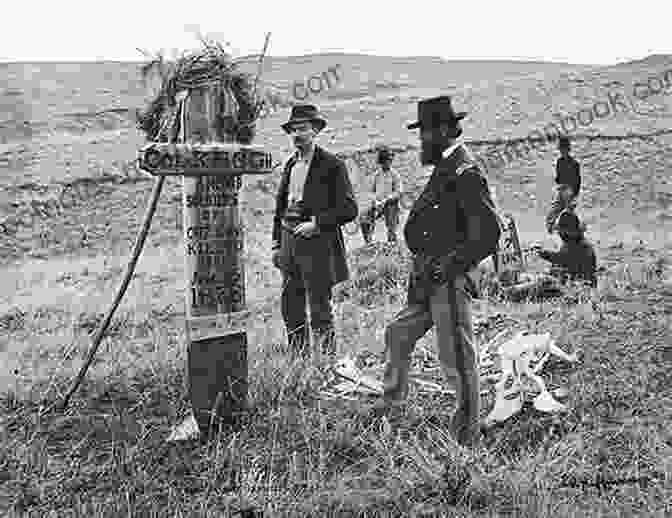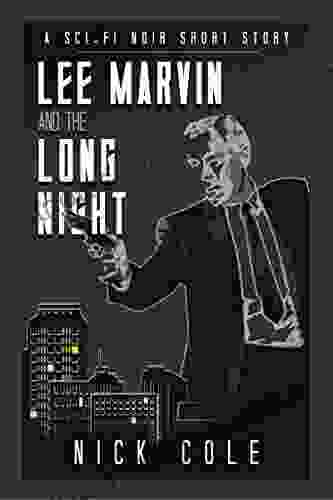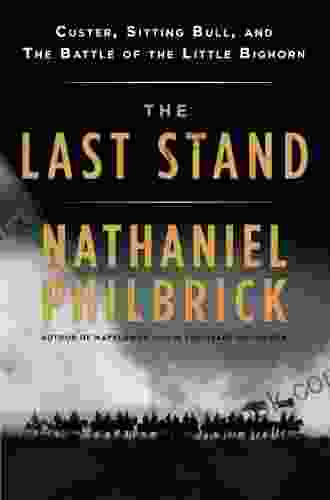Custer, Sitting Bull, and the Battle of the Little Bighorn: A Historical Tale


The Battle of the Little Bighorn was one of the most infamous battles in American history. It was fought on June 25, 1876, between the United States Army and a coalition of Lakota Sioux, Northern Cheyenne, and Arapaho warriors. The battle resulted in a decisive victory for the Native Americans and the death of Lieutenant Colonel George Armstrong Custer and all of his men.
Background
The Battle of the Little Bighorn was the culmination of a series of events that began in 1874, when gold was discovered in the Black Hills of South Dakota. The Black Hills were part of the Great Sioux Reservation, which had been established by the Treaty of Fort Laramie in 1868. The discovery of gold led to an influx of white settlers into the Black Hills, and the Sioux people began to resist the encroachment on their land.
4.6 out of 5
| Language | : | English |
| File size | : | 14891 KB |
| Text-to-Speech | : | Enabled |
| Enhanced typesetting | : | Enabled |
| X-Ray | : | Enabled |
| Word Wise | : | Enabled |
| Print length | : | 743 pages |
| Screen Reader | : | Supported |
In 1876, the United States government ordered the Sioux to return to the Great Sioux Reservation. The Sioux refused, and General George Crook was sent to lead an expedition to force them to comply. Crook's expedition was defeated at the Battle of the Rosebud on June 17, 1876.
After the Battle of the Rosebud, Custer's 7th Cavalry was sent to pursue the Sioux. Custer's men caught up with the Sioux at the Little Bighorn River on June 25, 1876.
The Battle
The Battle of the Little Bighorn began at around 2:00 pm. Custer's men attacked the Sioux village from three different directions. The Sioux warriors put up a fierce resistance, and Custer's men were quickly overwhelmed. Custer himself was killed in the battle, along with all of his men.
The Battle of the Little Bighorn was a major defeat for the United States Army. It was the largest battle fought between the United States Army and Native Americans, and it resulted in the death of one of the most famous American military leaders of the 19th century.
Aftermath
The Battle of the Little Bighorn had a profound impact on the relationship between the United States and the Sioux people. The battle led to the end of the Great Sioux War and the establishment of the Black Hills as a permanent part of the United States.
The Battle of the Little Bighorn is also remembered as a symbol of the resistance of Native Americans to the encroachment of white settlers. The battle has been the subject of numerous books, movies, and documentaries, and it continues to be a source of fascination for historians and the general public.
Key Figures
George Armstrong Custer

George Armstrong Custer was born in New Rumley, Ohio, on December 5, 1839. He graduated from West Point in 1861 and served in the Union Army during the Civil War. Custer was a brave and ambitious officer, and he quickly rose through the ranks. He was promoted to brigadier general in 1863, and he was awarded the Medal of Honor for his actions at the Battle of Gettysburg.
After the Civil War, Custer was sent to the West to fight the Sioux and Cheyenne. He was a ruthless and effective commander, and he quickly earned a reputation for his brutality. Custer's most famous victory was the Battle of the Washita River in 1868, in which he massacred a village of Cheyenne Indians.
Custer's career came to an end at the Battle of the Little Bighorn. He was killed in the battle, along with all of his men. Custer's death was a major blow to the United States Army, and it marked the end of an era of American expansionism.
Sitting Bull

Sitting Bull was born in 1831 near the Grand River in South Dakota. He was a Lakota Sioux chief and medicine man who played a leading role in the resistance to the United States government. Sitting Bull was a skilled warrior and a gifted orator, and he quickly became a respected leader among the Sioux people.
Sitting Bull was a strong advocate for the preservation of the Sioux way of life. He opposed the government's efforts to force the Sioux onto reservations, and he led a number of raids against white settlers and soldiers. Sitting Bull's most famous victory was the Battle of the Little Bighorn, in which he defeated Custer's 7th Cavalry.
After the Battle of the Little Bighorn, Sitting Bull and his followers fled to Canada. They remained in Canada for several years, but they eventually surrendered to the United States government in 1881. Sitting Bull was imprisoned for two years, and he was then sent to live on the Standing Rock Indian Reservation in North Dakota.
Sitting Bull continued to be a vocal critic of the government's Indian policies. He died in 1890 during the Wounded Knee Massacre, which was a tragic event that marked the end of the American Indian Wars.
Legacy
The Battle of the Little Bighorn is a reminder of the complex and often tragic relationship between the United States and Native Americans. The battle has been the subject of numerous books, movies, and documentaries, and it continues to be a source of fascination for historians and the general public.
The Battle of the Little Bighorn is also a reminder of the courage and resilience of the Sioux people. Sitting Bull and his followers fought bravely against overwhelming odds, and they ultimately prevailed. The Battle of the Little Bighorn is a testament to the strength and determination of the Sioux people, and it is a story that continues to inspire people today.
4.6 out of 5
| Language | : | English |
| File size | : | 14891 KB |
| Text-to-Speech | : | Enabled |
| Enhanced typesetting | : | Enabled |
| X-Ray | : | Enabled |
| Word Wise | : | Enabled |
| Print length | : | 743 pages |
| Screen Reader | : | Supported |
Do you want to contribute by writing guest posts on this blog?
Please contact us and send us a resume of previous articles that you have written.
 Top Book
Top Book Novel
Novel Fiction
Fiction Nonfiction
Nonfiction Literature
Literature Paperback
Paperback Hardcover
Hardcover E-book
E-book Audiobook
Audiobook Bestseller
Bestseller Classic
Classic Mystery
Mystery Thriller
Thriller Romance
Romance Fantasy
Fantasy Science Fiction
Science Fiction Biography
Biography Memoir
Memoir Autobiography
Autobiography Poetry
Poetry Drama
Drama Historical Fiction
Historical Fiction Self-help
Self-help Young Adult
Young Adult Childrens Books
Childrens Books Graphic Novel
Graphic Novel Anthology
Anthology Series
Series Encyclopedia
Encyclopedia Reference
Reference Guidebook
Guidebook Textbook
Textbook Workbook
Workbook Journal
Journal Diary
Diary Manuscript
Manuscript Folio
Folio Pulp Fiction
Pulp Fiction Short Stories
Short Stories Fairy Tales
Fairy Tales Fables
Fables Mythology
Mythology Philosophy
Philosophy Religion
Religion Spirituality
Spirituality Essays
Essays Critique
Critique Commentary
Commentary Glossary
Glossary Bibliography
Bibliography Index
Index Table of Contents
Table of Contents Preface
Preface Introduction
Introduction Foreword
Foreword Afterword
Afterword Appendices
Appendices Annotations
Annotations Footnotes
Footnotes Epilogue
Epilogue Prologue
Prologue Vic Lejon
Vic Lejon Laura Mcinerney
Laura Mcinerney Nancy Carpentier Brown
Nancy Carpentier Brown Wanda Weathersby
Wanda Weathersby Sherry Johnson Deal
Sherry Johnson Deal Victor Pelevin
Victor Pelevin Mark Minervini
Mark Minervini Michel Tremblay
Michel Tremblay Christina Rossetti
Christina Rossetti Seidu Lawal
Seidu Lawal Gloria Steinem
Gloria Steinem Craig Johnson
Craig Johnson Forrest Pritchard
Forrest Pritchard Kenneth Michael Plaisance
Kenneth Michael Plaisance Annie Burrows
Annie Burrows Stanko Natzev
Stanko Natzev Joel Salatin
Joel Salatin W David Medina
W David Medina Crystal Daniels
Crystal Daniels Amadou Ba
Amadou Ba
Light bulbAdvertise smarter! Our strategic ad space ensures maximum exposure. Reserve your spot today!

 Stuart BlairCruel Deception: A Dark Mafia Romance Novel Exploring the Marchetti Mafia's...
Stuart BlairCruel Deception: A Dark Mafia Romance Novel Exploring the Marchetti Mafia's...
 Carlos DrummondCunningham's Encyclopedia of Magical Herbs: A Comprehensive Guide to the...
Carlos DrummondCunningham's Encyclopedia of Magical Herbs: A Comprehensive Guide to the...
 Preston SimmonsHow to Love the Empty Air: A Journey of Loss, Discovery, and Finding Hope...
Preston SimmonsHow to Love the Empty Air: A Journey of Loss, Discovery, and Finding Hope... Octavio PazFollow ·12.9k
Octavio PazFollow ·12.9k Banana YoshimotoFollow ·9.3k
Banana YoshimotoFollow ·9.3k Harvey HughesFollow ·6.9k
Harvey HughesFollow ·6.9k Fyodor DostoevskyFollow ·7k
Fyodor DostoevskyFollow ·7k Bob CooperFollow ·7.2k
Bob CooperFollow ·7.2k Jeffrey CoxFollow ·11.4k
Jeffrey CoxFollow ·11.4k Eugene ScottFollow ·19.7k
Eugene ScottFollow ·19.7k Colt SimmonsFollow ·18.3k
Colt SimmonsFollow ·18.3k

 Colin Foster
Colin FosterBlacktop Wasteland: A Novel S A Cosby
In the vast literary landscape of...

 Curtis Stewart
Curtis StewartOvid's Metamorphoses: An Ancient Epic of Transformation...
Ovid's Metamorphoses is an epic poem...

 Adam Hayes
Adam HayesThe Elements of Piano Playing Op. 30: A Comprehensive...
: Unveiling...

 Patrick Hayes
Patrick HayesLee Marvin and The Long Night: A Tale of Vengeance, Grit,...
In the annals of Western cinema, few...

 Jermaine Powell
Jermaine PowellUnveiling the Alluring World of Romantic Thrillers,...
Prepare to delve into a...
4.6 out of 5
| Language | : | English |
| File size | : | 14891 KB |
| Text-to-Speech | : | Enabled |
| Enhanced typesetting | : | Enabled |
| X-Ray | : | Enabled |
| Word Wise | : | Enabled |
| Print length | : | 743 pages |
| Screen Reader | : | Supported |








